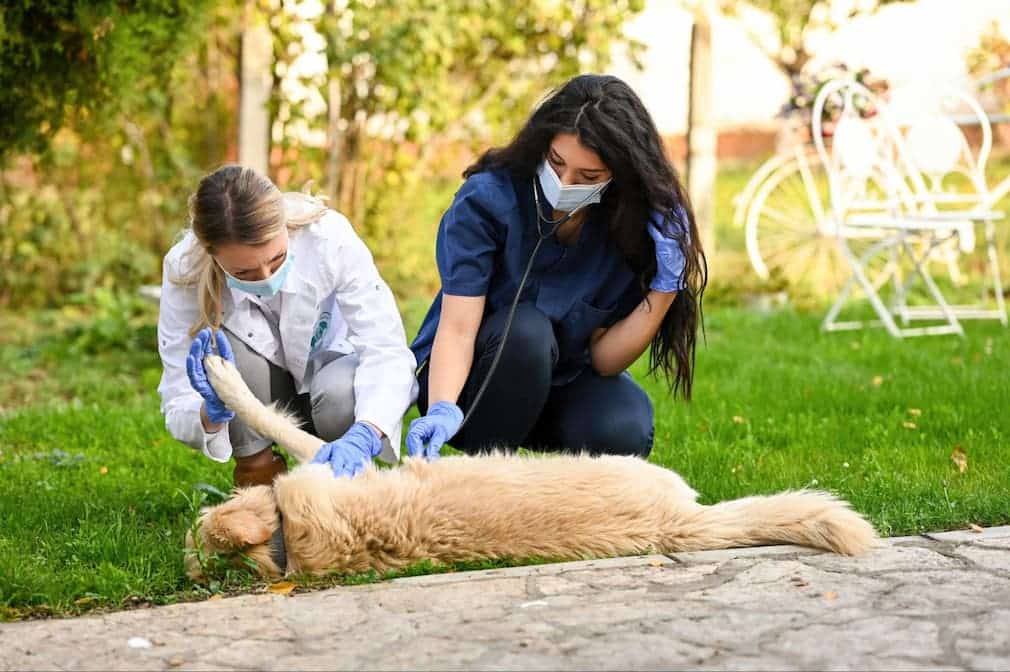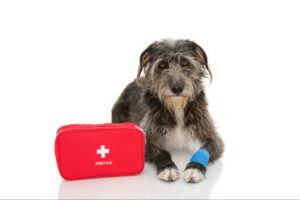Knowing dog first aid is crucial for all dog owners as it can help save their furry friend’s life in case of an emergency. Dogs are curious creatures and can get into all sorts of trouble, from choking on something they shouldn’t have eaten to getting hit by a car.
Knowing basic first aid techniques can help stabilize your pet’s condition until they can be taken to a veterinarian. It is essential for pet owners to understand how to perform CPR, treat wounds, and recognize the signs of distress in dogs. Being prepared with the knowledge and the right supplies can make all the difference in a critical situation. This is an excellent time to familiarize oneself with the basic principles of dog first aid.

Introduction to Dog First Aid
Knowing how to handle common injuries such as cuts, burns, and choking can save your dog’s life. Introduction to dog first aid covers the fundamentals of providing immediate care to your dog before getting them to a veterinarian. This includes understanding your dog’s vital signs, administering CPR, and identifying potential hazards in your home. By learning the basics of dog first aid, you can ensure your beloved pet stays healthy and safe.
Common Dog Injuries and Emergencies
When pet owners are aware of the types of injuries and emergencies prevalent in the canine world, they can be better prepared to handle them should they arise. Below is a list of the most common traumas dogs can face.
- Eye Trauma: There is a spectrum of eye injuries, ranging from minor scratches and abrasions on the cornea to more serious conditions like corneal ulcers and, in severe cases, perforations and globe rupture.
- Foreign Body Ingestion-things like rocks, shoes, underwear, broken glass, etc
- Dog Bites (fighting with another dog or animals)
- Hit By a Car: Injuries caused by vehicles can vary in severity, and some may not be immediately visible. To avoid such incidents, always keeping your pet on a leash or under close supervision is recommended.
- Broken or Torn Nail: Don’t let your dog’s nails get too long. Long nails make it easier to have a tear which can cause significant bleeding and often requires vet care and sedation to repair.
- Back Issues/Lameness: Dogs with long backs and too much weight are prone to slipped discs when jumping from a chair or bed to the floor.
- Dehydration/Heat Stroke: Most common with older and overweight dogs. Use caution when exercising during hot weather.
Essential Items for a Dog First Aid Kit
Always be prepared! Make a dog first aid kit and have it on hand wherever you go. Consider having multiple kits, such as a large, fully stocked one for the home and a smaller kit for the car or family outings.
For bandaging material, you should keep a roll of gauze (which can also be used to create a makeshift muzzle if needed), square gauze, non-stick pads, first aid tape, or Vetwrap. For medications, be sure to have a multi-purpose product on hand which cleans, treats, and helps heal the wounds. You can also include cortisol cream for itchy bug bites, eye wash solution in case you need to flush your dog’s eye, and hydrogen peroxide in case your dog ingests something potentially toxic and you need to induce vomiting.
Remember that vomiting should only be induced after consulting your veterinarian or poison control. Keep an eye on the expiration dates of medications and replace them whenever they expire.
Information To Have Accessible
Keep a list of vital dog first aid phone numbers handy in an emergency. These numbers should include your regular veterinarian, the local animal emergency clinic, and the number for the ASPCA animal poison control center, which is open 24 hours a day, seven days a week. They can be reached at (888) 426-4435.
How to Assess Your Dog’s Vital Signs
When an emergency occurs, take a moment to look around and fully assess the situation. For example, don’t immediately rush out in traffic if your dog is hit by a car. You won’t do him any good if you end up in the hospital yourself. Carefully approach your pet and assess his condition. Is he breathing? If not, start CPR. Is he bleeding? Apply direct pressure to the wound, and so on.
Remember to handle your injured or sick dog gently and carefully. Even the gentlest dog may bite when scared or in pain. Keep your face away from the mouth and resist the urge to hug your dog to comfort him, as this may scare him more or worsen his injuries. Use a calm, soothing voice to reassure your pet, and if possible, put him in an area away from the commotion. If you need to transport him and his wounds are painful, you should place a muzzle on. Either have one handy in your first aid kit or make one out of a roll of gauze. If your dog is small, wrap him in a blanket or towel and carry him. Larger dogs can be transported on makeshift stretchers such as a board, a sled, or toboggan, or even a large blanket to make a hammock-style sling.
Basic First Aid Techniques for Dogs
As a pet owner, knowing basic dog first aid techniques in an emergency is essential. Some techniques include learning to perform CPR, controlling bleeding, treating wounds, and recognizing signs of heatstroke.
CPR
In the case of a dog not breathing or having no heartbeat, dog CPR is an emergency procedure involving artificial respirations and chest compressions, similar to human CPR, to save the animal’s life potentially. If you are the first person that comes upon a dog not breathing, you should immediately call a veterinarian or an emergency animal hospital. It will take them some time to arrive, so assist the animal if you can. There are three easy steps to help you remember how to perform CPR on a canine, the ABCs.
A:. Ensure the airways are clear, and check the mouth and throat for obstructions. The airways must be clear to perform successful CPR.
B: Check to see if the dog is breathing. Look for the chest to rise and fall. If the pup is breathing, CPR is not necessary.
C: Check for a heartbeat by laying the dog on the right side and pushing the front elbow to the chest. The point where the elbow meets the chest is the location of the heart. If you cannot see movement in this area, feel with your hands for a beat.
Heimlich Maneuver
If a dog is choking, the Heimlich maneuver can be performed by placing your hands on both sides of the rib cage and applying pressure. After removing the object, CPR can be administered if the dog is still not breathing.
External Bleeding
Apply pressure to the wound and elevate the injured part of the body.
Seizure
Do not restrain your dog but keep them away from objects that can cause additional harm. When the seizing stops, keep them warm and quiet.
Heatstroke
Move your dog to a cool, shaded area if you are outside. If you can access towels, wet them with cold water and apply them to the neck or head. You can also put their paws or belly in cool water.
Shock
Keep your pup warm and quiet while restraining them. If they are unconscious, keep their head level with the rest of the body.

Other First Aid Tips
Get a decal for your window if an emergency occurs while you are not at home. This decal will let rescue personnel know you have pets inside that may need attention.
Consider taking a class in dog first aid and learning animal CPR. Classes are readily available online and through community educational centers, libraries, pet stores, and sometimes your local veterinarian.
When to Seek Professional Help
Finally, remember that dog first aid does not substitute veterinary care, and it is meant to stabilize the animal until proper veterinary care can be given. Any first aid care given to your dog should be followed by immediate veterinary attention, either by your regular veterinarian or your local animal emergency clinic. Be safe!
Have you taken a class in dog first aid or animal CPR? What was your experience like? Tell us all about it in the comments.










